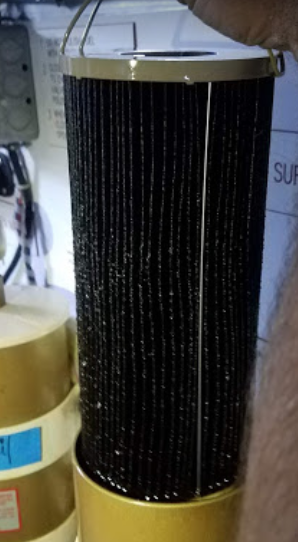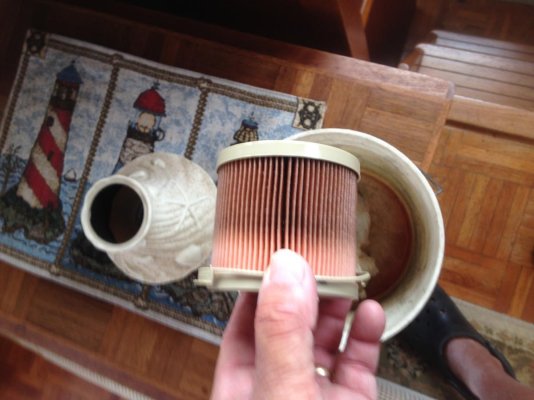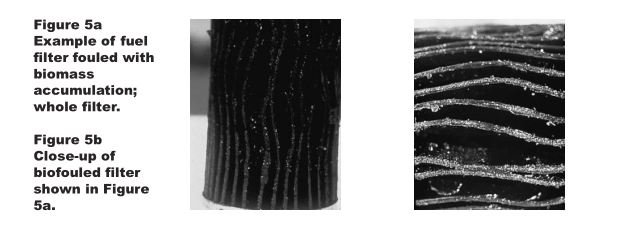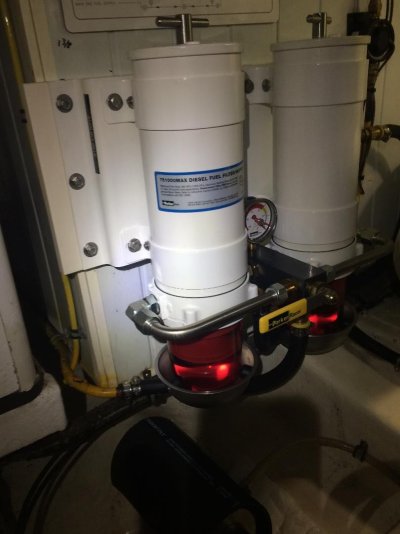BrianSmith
Senior Member
- Joined
- Mar 20, 2014
- Messages
- 487
- Location
- USA
- Vessel Name
- Smartini
- Vessel Make
- 2002 Kristen 52' Flybridge Trawler
Lots of discussion about the fuel filter system, but I don't find any discussions about the filter change frequency. I have a vacuum gauge on my Racor 1000 with the "telltale", and since my last filter change 13 months and 422 hours ago, it has never gone above 2 in. Hg. But when I changed it just now, the filter was BLACK!
I had intended to wait until the vaccuum gauge started reaching at least 5 inches when running, but 13 months seemed long enough, and I'm glad I changed it - the look of that filter scares me.
How many hours of engine time (or calendar time?) do you use as your fuel filter change interval?
FYI, I always polish new fuel through a 2 micron Racor 1000 into my "day tank", and the 10 micron filter I just changed pulls from the day tank and provides fuel to the on-engine filter.
(I'd prefer to stay away from a discussion of my choice of filters, please.)
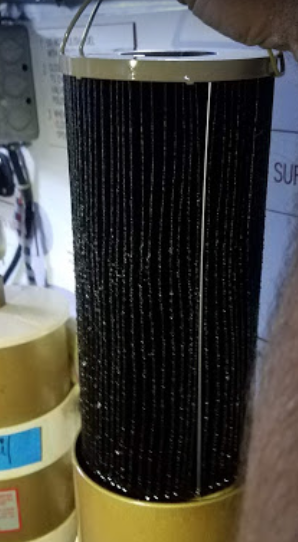
I had intended to wait until the vaccuum gauge started reaching at least 5 inches when running, but 13 months seemed long enough, and I'm glad I changed it - the look of that filter scares me.
How many hours of engine time (or calendar time?) do you use as your fuel filter change interval?
FYI, I always polish new fuel through a 2 micron Racor 1000 into my "day tank", and the 10 micron filter I just changed pulls from the day tank and provides fuel to the on-engine filter.
(I'd prefer to stay away from a discussion of my choice of filters, please.)

